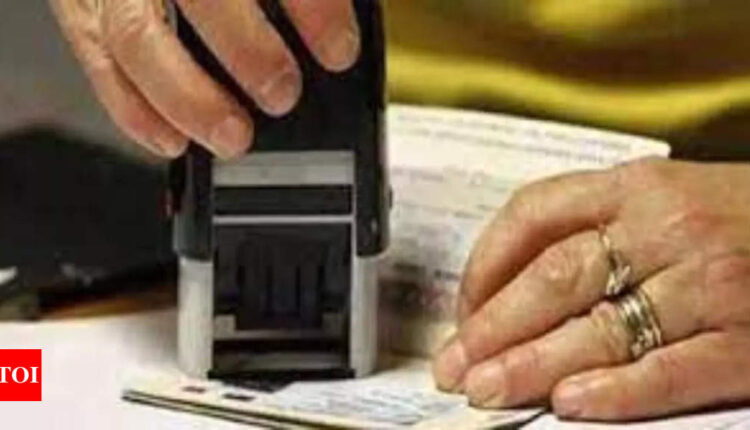USCIS proposes to hike fees in move to deal with visa processing backlogs – Times of India
[ad_1]
The new fee structure would allow USCIS to recover its operating costs more fully, re-establish and maintain timely case processing, and prevent the accumulation of future case backlogs. Notably, USCIS receives approximately 96 per cent of its funding from filing fees and not from US congressional appropriations.
If approved, this step will go a long way in helping the USCIS deploy more resources and clear visa application backlogs globally. For Indian applicants of various categories of US visas, this is certainly very good news; since the US visa backlogs in India are among the longest. Indians applicants of certain categories of US visas, including B1-B2 visitors’ visas, are facing up to two year or longer delays in getting visa interview appointments.
“The proposed fee rule is the result of a comprehensive fee review at USCIS. That review determined that the agency’s current fees, which have remained unchanged since 2016, fall far short of recovering the full cost of agency operations,” according to a press release by USCIS on Tuesday.
USCIS generally publishes a fee rule biennially, and proposes these changes to account for the expansion of humanitarian programmes, federally mandated pay raises, additional staffing requirements, and other essential investments.
“USCIS has been facing huge challenges since the pandemic when visa operations were shut down globally for several months. There have been huge resource shortages since USCIS staff are paid from the visa fees that are collected; which had dwindled when the operations were shut. In India, the agency is adding additional staff to deal with the huge backlogs but officers are still hard pressed and have to often interview over 100 applicants a day or adjudicate a similar number of cases,” Mumbai-based immigration lawyer, Poorvi Chothani, had told Times of India in an interview last year.
In 2020, the onset of the Covid -19 pandemic led to a dramatic reduction in receipts of new applications, resulting in a temporary drop in revenue by 40 per cent. The combination of depleted cash reserves, a temporary hiring freeze, and workforce attrition has reduced the agency’s capacity to timely adjudicate cases, particularly as incoming caseloads rebound to pre-pandemic levels. Increasing demand for low- or no-fee humanitarian programmes has added to these fiscal challenges.
If the proposed steps are implemented, there is likely to be a big hike in the fees of various employment based non-immigrant visas including the H-1B; of which the largest numbers are issued to Indians every year. Hence the proposed measures by USCIS could meet with a lot of criticism from technology companies in the US which hire large numbers of foreign workers and will now have to face the burden of the increased fees.
“The proposed rule would increase some fees, including a modest increase in the fee for certain naturalisation applications, while preserving existing fee waiver eligibility for low-income and vulnerable populations and adding new fee exemptions for certain humanitarian programmes,” the USCIS release said. If finalised, the proposed rule would decrease or minimally increase fees for more than one million low-income filers each year.
“In addition to improving customer service operations and managing the incoming workload, USCIS must continue to fulfil our growing humanitarian mission, upholding fairness, integrity, and respect for all we serve,” said USCIS director Ur M. Jaddou. “This proposed rule allows USCIS to more fully recover operating costs for the first time in six years and will support the administration’s effort to rebuild the legal immigration system.”
USCIS’ proposed new measures include a plan to incorporate biometrics costs into the main benefit fee and remove the separate biometric services fee; establish separate fees for each non-immigrant classification covered by Form I-129, petition for non-immigrant workers; change the premium processing timeframe from 15 calendar days to 15 business days; and institute lower fees for certain forms filed online.
The proposed rule would not change fee waiver eligibility requirements. The projected revenues resulting from the proposed rule would allow USCIS to increase the number of adjudicators processing applications, implement technology improvements, and increase support provided to individuals seeking information and assistance from USCIS.
The 60-day public comment period starts following publication of the NPRM in the federal register. Fees will not change until the final rule goes into effect, after the public has had the opportunity to comment and USCIS finalises the fee schedule in response to such comments. USCIS will host a public engagement session on the proposed fee rule on January 11, 2023.
[ad_2]
Source link


Comments are closed.